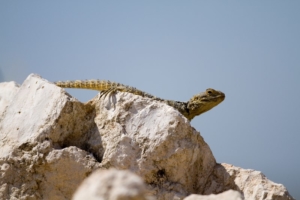Le mardi 16 juillet 2019 à 11h, Kerim Çiçek (Ege University, Izmir, Turquie) présentera en salle Jean-Paul Taris un séminaire en anglais intitulé « Diversity and conservation of Turkish herpetofauna » ; l’accès est libre et sans inscription.
Résumé

Turkey is a transcontinental country at the junction of Europe, the Middle East, Central Asia, and Africa. Turkey’s location, mountains, and its encirclement by three seas have resulted in high terrestrial, freshwater, and marine biodiversity. Most of Turkey’s land area is covered by three of the world’s 36 biodiversity hotspots: Caucasus, Irano-Anatolian, and Mediterranean. The exceptional diversity of Turkey’s nature is a result of various biogeographic reasons. Due to its crossroads location and diversity of its geographic features and climatic conditions, Turkey hosts rich biodiversity.
There are 175 herptile species inhabiting Turkey, comprising 36 amphibian (19 caudatans and 17 anurans) and 139 reptilian species (11 chelonians, 3 amphisbaenians, 67 lizards and 58 snakes). Caudatans (Caudata) contains 7 genera including single family. Anurans (Anura) are represented by 6 families and 8 genera. The chelonians contain 7 families, 9 genera and 11 species. Lizards (Sauria) are represented by 9 families and the most diverse family is Lacertidae with 41 species. Snakes (Serpentes) contain 8 families, 22 genera and the most diverse family is Colubridae with 35 species.
According to IUCN Red List, about 30% (11 species) of Turkish amphibians are globally threatened, while 5.5% (2 species) are critically endangered, 14% (5 species) endangered and 11% (4 species) vulnerable. About 12% (17 species) of Turkish reptiles are globally threatened, while 4% (6 species) are critically endangered, 6% (8 species) endangered and 2% (3 species) vulnerable.
Turkey faces a significant challenge with regard to conservation of biodiversity due to limited research and lack of translation into other languages of existing material. Besides, there are limited conservation studies since the 1980s. The oldest studies on the conservation of Turkish herptiles carried out on sea turtles with the support of the government since 1982. In addition, the conservation studies on Turkish amphibians has been started since 2000.
Unfortunately, it is still not at the desired level. Turkish herptiles are mainly threatened by human-induced habitat loss, alien species (eg Trachemys scripta, exotic fish and invertebrates), over-harvesting (especially the export of amphibians, domestic animals), pollution (agrochemicals, factory waste, etc.), climate change.
Suivez l’actualité de la Tour du Valat et de l’Association des Amis de la Tour du Valat sur les réseaux sociaux :
- Page Facebook de la Tour du Valat [1]
- Page Twitter de la Tour du Valat [2]
- Page Facebook des Amis de la Tour du Valat [3]